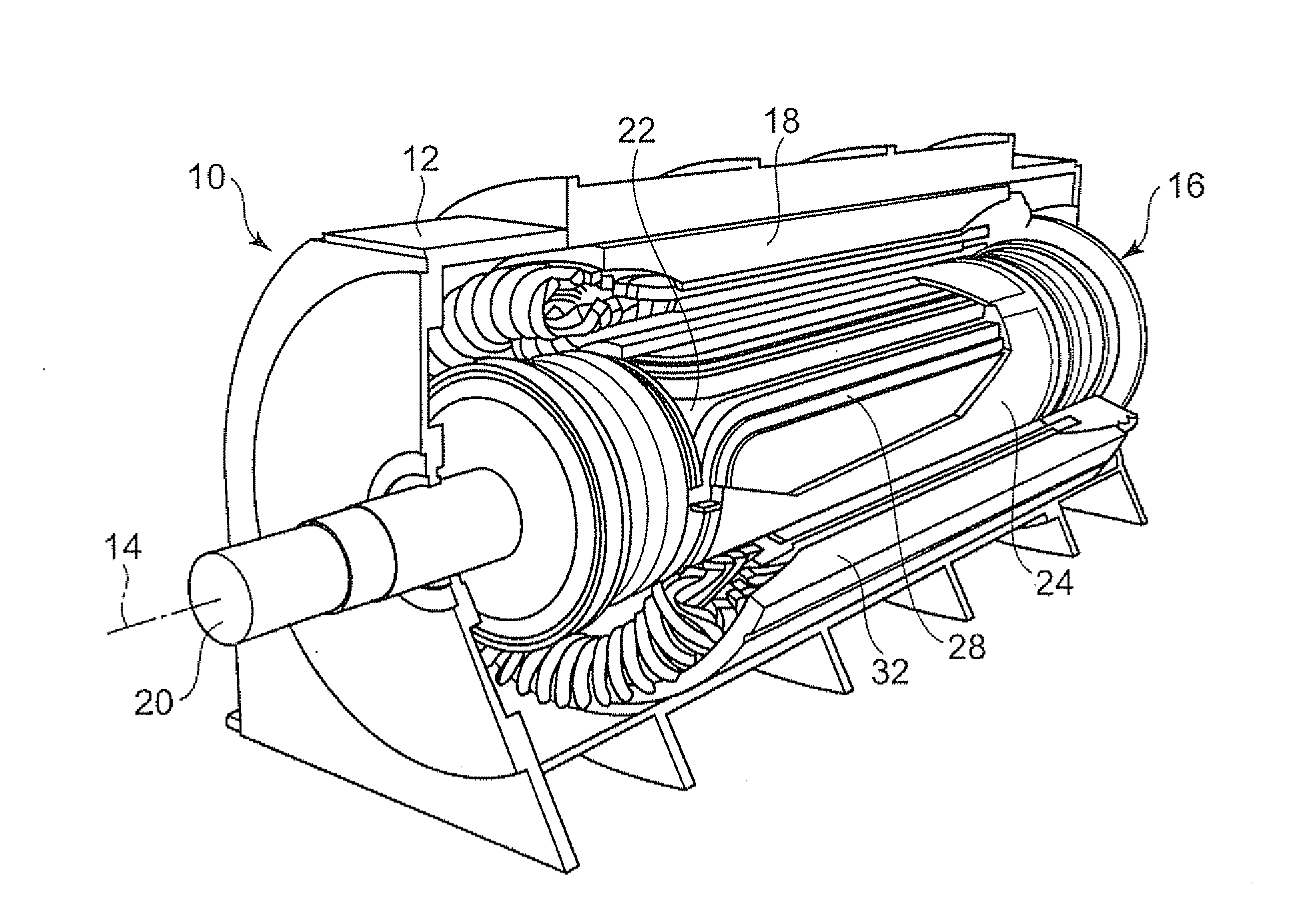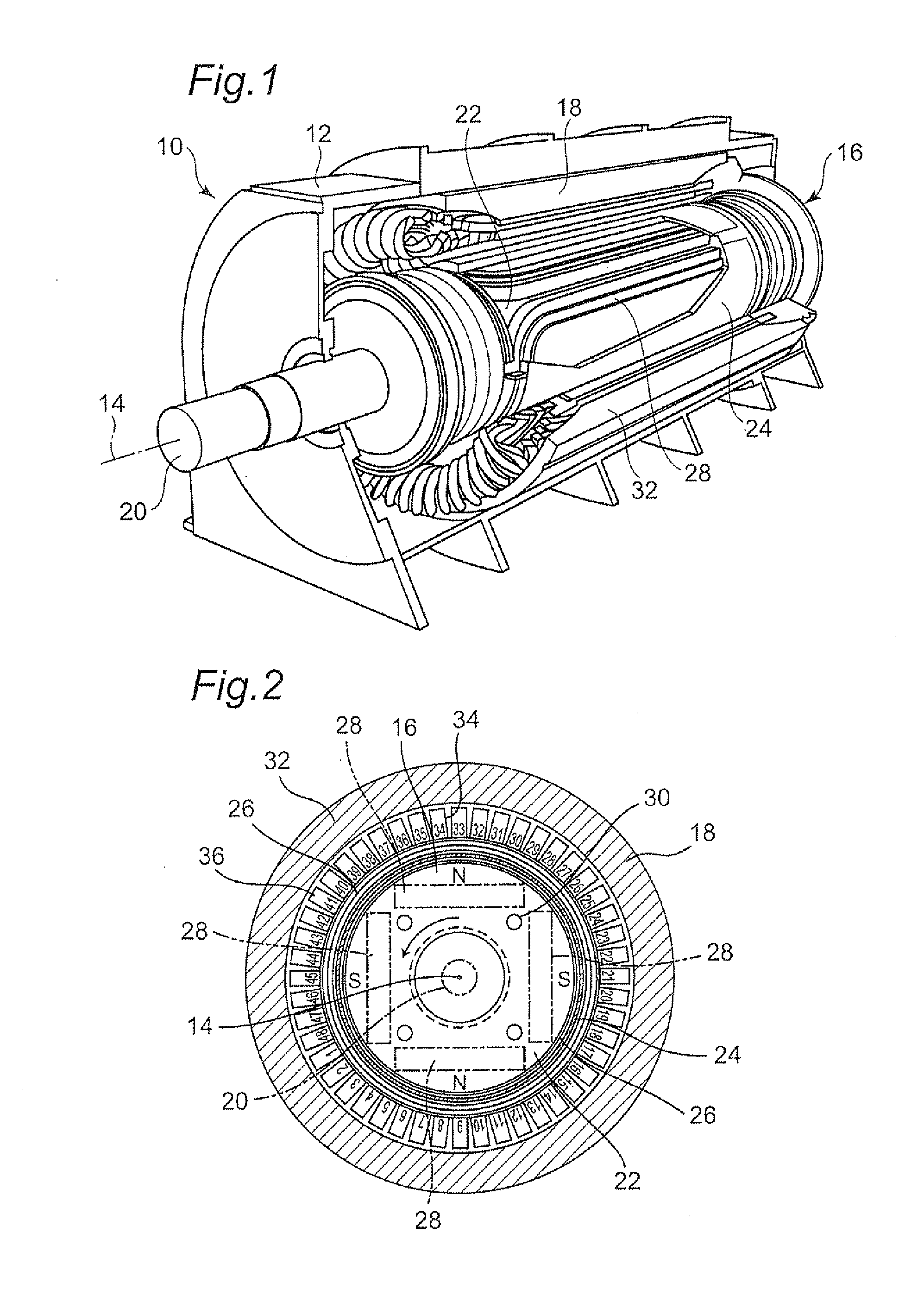Superconducting rotating electrical machine and stator for use with superconducting rotating electrical machine
a superconducting rotating electrical machine and stator technology, applied in synchronous machines, windings, dynamo-electric components, etc., can solve the problems of large copper loss, insufficient effective reduction of temperature increase, electric resistance heating, etc., to achieve the effect of improving power conversion efficiency
- Summary
- Abstract
- Description
- Claims
- Application Information
AI Technical Summary
Benefits of technology
Problems solved by technology
Method used
Image
Examples
first embodiment
[0057]To address this problem, in the first embodiment shown in FIGS. 10A, 10B and 10C, each of the electrical connections between the neighborhood windings, e.g., windings 40(1) and 40(2), windings 40(2) and 40(3), and windings 40(3) and 40(4) (hereinafter referred to as “coil-to-coil connection”), is performed by connecting the distal ends 54 of wires 44(a)-44(l) with the neighborhood proximal ends 56 of wires 44(1)-44(a), respectively, namely, wires 44(a) and 44(l), 44(b) and 44(k), . . . , 44(k) and 44(b), and 44(l) and 44(a) are connected with each other. This results in that, as shown in FIG. 11, most of the eddy currents generated in the proximal straight portions 50 and the distal straight portions 52, flowing in the opposite directions in the winding are cancelled by each other. Then, the eddy current in the winding is minimized.
second embodiment
[0058]It should be noted that the windings are arranged at a regular interval in the peripheral direction and, therefore, as shown in FIGS. 12A and 12B, a certain phase difference exists between one eddy current in one winding and the other eddy current in the neighborhood winding, so that not all the eddy currents are cancelled by each other and a small amount of eddy current remains in each winding. To address this problem, in the second embodiment shown in FIGS. 13A, 13B and 13C, a connection between one winding group 72(1) including windings 40(1)-40(4) and arranged to oppose one magnetic pole and the other winding group 72(2) including windings 40(25)-40(28) and arranged to oppose the other magnetic pole, the first and second groups being spaced 180 degrees away from each other in the peripheral direction (herein after referred to as “pole-to-pole connection”), is performed by connecting the distal ends of the wires 44(a)-44(l) in the first group 72(1) with the proximal ends of...
PUM
 Login to View More
Login to View More Abstract
Description
Claims
Application Information
 Login to View More
Login to View More - R&D
- Intellectual Property
- Life Sciences
- Materials
- Tech Scout
- Unparalleled Data Quality
- Higher Quality Content
- 60% Fewer Hallucinations
Browse by: Latest US Patents, China's latest patents, Technical Efficacy Thesaurus, Application Domain, Technology Topic, Popular Technical Reports.
© 2025 PatSnap. All rights reserved.Legal|Privacy policy|Modern Slavery Act Transparency Statement|Sitemap|About US| Contact US: help@patsnap.com



